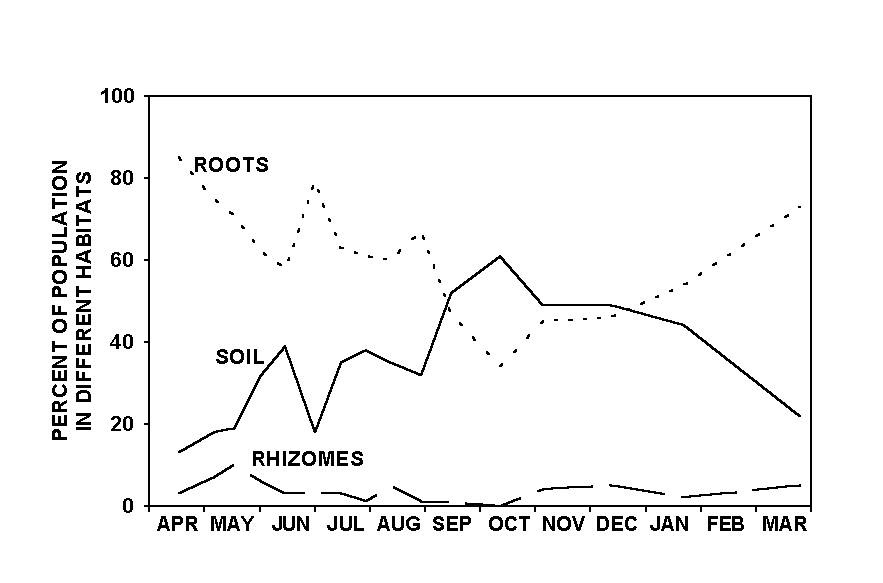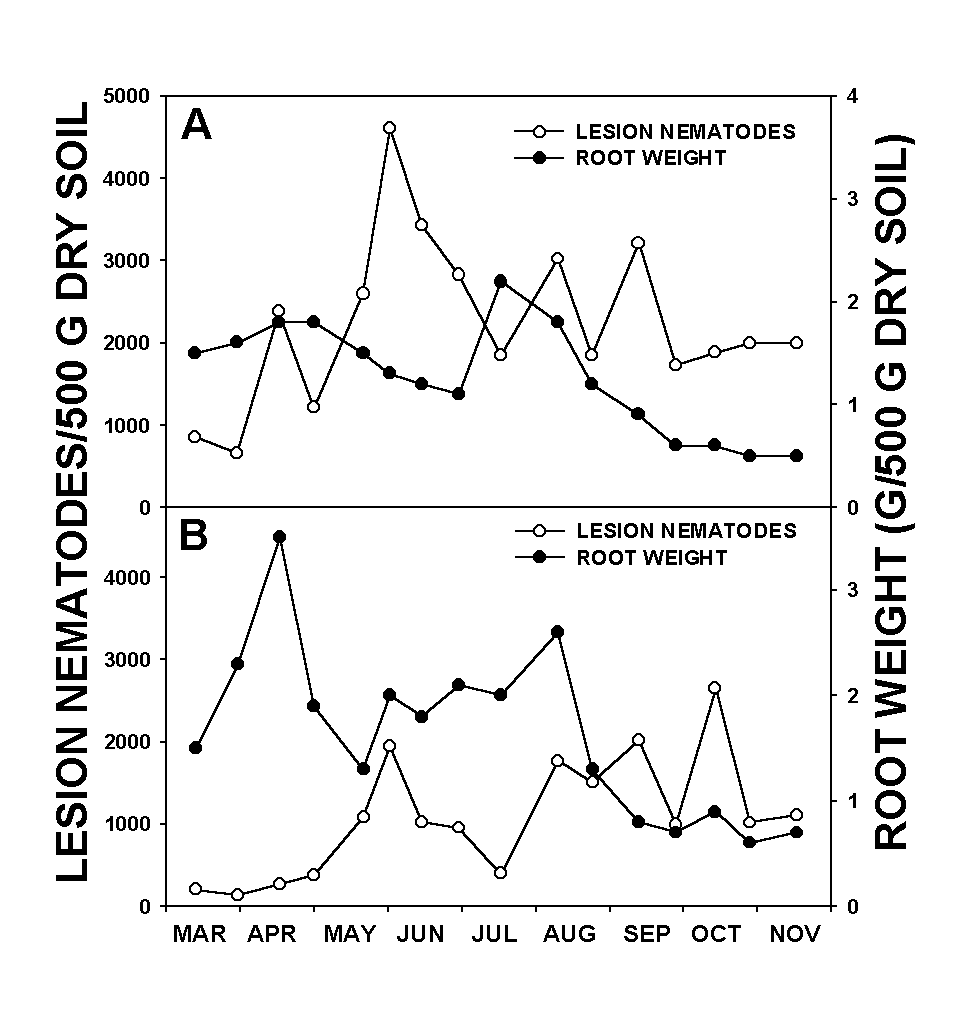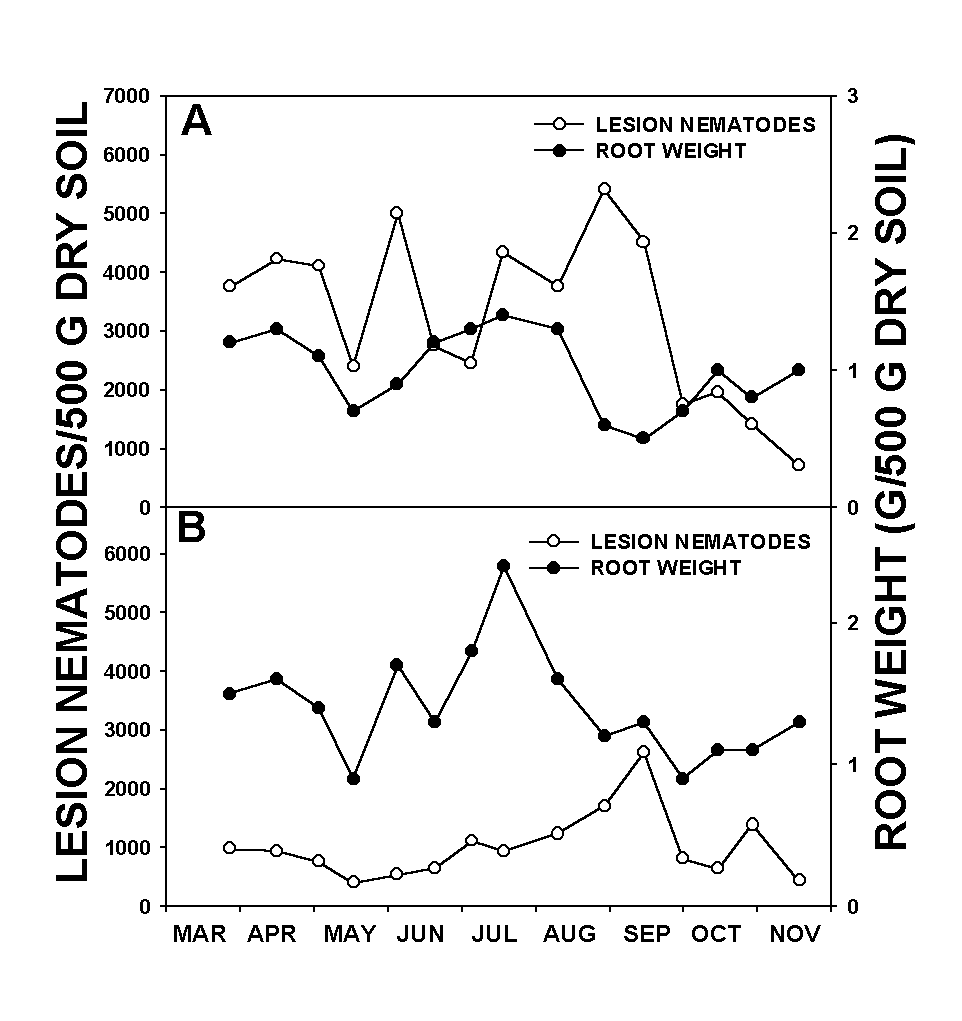CONTENTS
References
[Return
to Nematode Identification]
[Return
to Nematode Biology]
[Table of
Contents]
[Home] |
|
 |
| Figure 1. Proportion of the
total population of root-lesion nematode (Pratylenchus penetrans) found within the
soil, roots, and rhizomes during different times of the year (see further explanation
below). |
Root-lesion nematode population cycles
(total population in soil and roots) also follow behind root growth dynamics, with peaks
and lows occurring four to six weeks after those for roots (see Figures above). This time
interval is the approximate time it takes for P. penetrans to complete one
generation and may explain the lag in response of nematodes behind that observed for
roots. This pattern occurs with nematicide treatment as well. However, root peaks are
larger and nematode peaks are suppressed.
 |
| Seasonal population cycles of
root-lesion nematodes in relation to root growth in the Willamette Valley from nontreatged
(A) and fall nematicide trated (B) peppermint. Data were collected by taking cores to 4-6
inches, weighing the core and determining the number of nematodes that resided in 500 g of
that soil. |
 |
| Seasonal population cycles of
root-lesion nematodes in relation to root growth in Central Oregon from nontreated (A) and
fall nematicide treated (B) peppermint. Data were collected by taking cores to 4-6 inches,
weighing the core and determining the number of nematodes that resided in 500 g of that
soil. |
Root-lesion nematodes are migratory
endoparasites that may occur in soil, roots and rhizomes. Figure 1
above illustrates how the proportion of the population in each of these three habitats
changes through the year. This figure is the composite of two years of data from each of
two field sites and clearly describes the seasonal distribution of nematodes in these
different habitats. While root-lesion nematodes infect rhizomes, which may be important in
spreading this pathogen to other fields, the proportion of the total population in the
rhizomes is very small and can be ignored in the overall dynamics of the whole population.
The most important point from Figure 1 is that
substantial proportions of the population may be found in the roots and in the soil and
that the proportions in these two habitats vary through the year. In very early spring,
the majority of the population
is in the roots. Conversely, in the fall a larger part of the population is in the soil.
Therefore, to census the total population accurately, both soil and roots need to be
sampled at the same time regardless of when samples are taken. |



